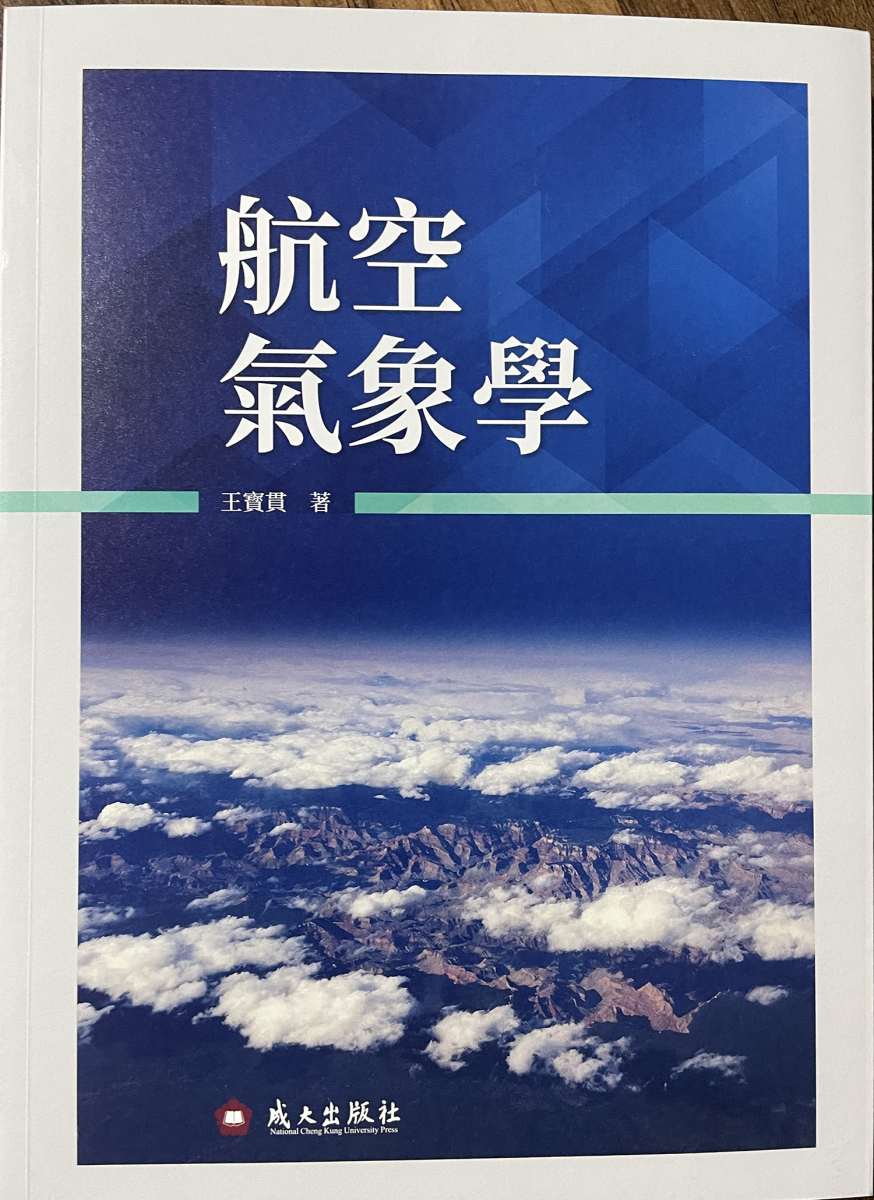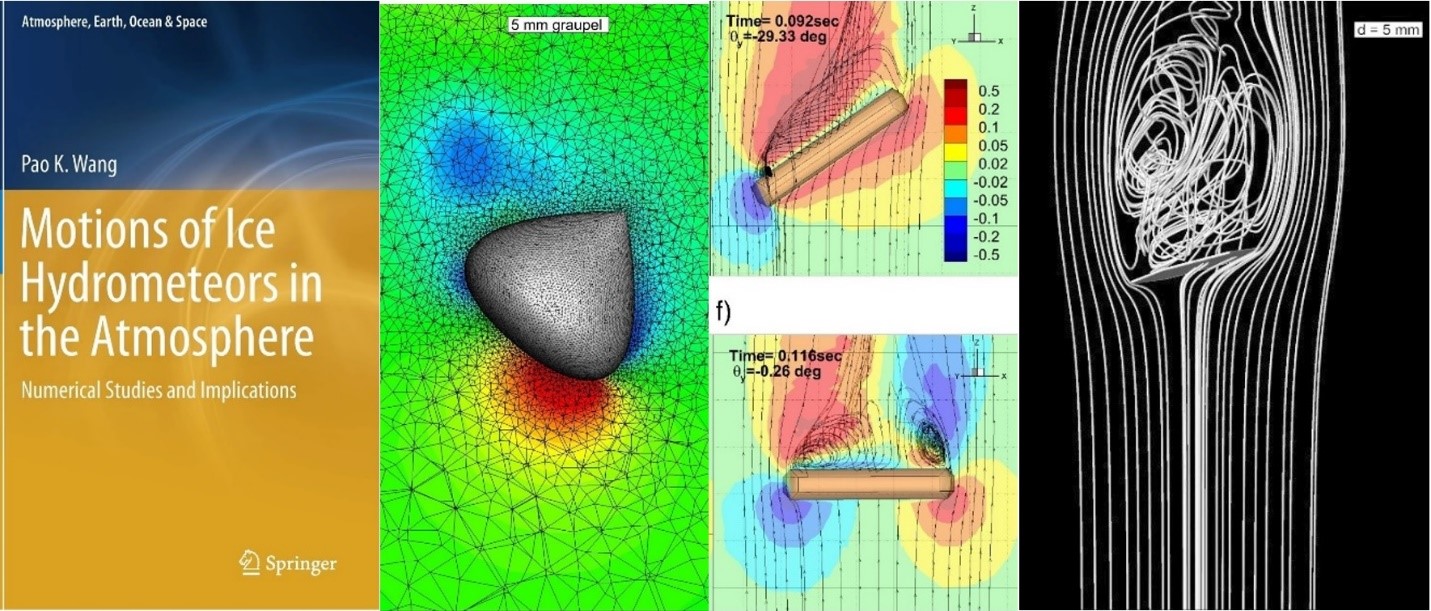

Wang, Pao-Kuan王寳貫
Academician
Research Interests
Prof. Pao-Kuan Wang has made outstanding contributions to the field of atmospheric science in the areas of (1) cloud physics, (2) cloud dynamics, (3) aerosol physics, and (4) historical climatology.
The research by the Intergovernmental Panel for Climate Change (IPCC) points out that the factor of clouds and aerosol is the source of largest uncertainty in the prediction of future climate using climate models because of the huge influence of cloud factor on atmospheric radiation, and it is difficult to predict clouds accurately. Prof. Wang research specialty is precisely the key field that can minimize this uncertainty
Prof. Pao-Kuan Wang is an international pioneer who created the research field of deep convective impact of the stratosphere-troposphere exchange. His recent achievement is the discovery of gravity wave breaking mechanism at the top of thunderstorm clouds. Normally the stability of the stratosphere will suppress the upward transport of tropospheric materials, but Prof. Wang found that the strong updrafts in the thunderstorm will excite internal gravity waves and, under suitable conditions, wave breaking may occur. The breaking waves can penetrate the tropopause and at the same time transport water vapor and ice into the stratosphere. This research has been published in the Journal of Geophysical Research (Wang, 2003).
Representative Publications
Pao K. Wang, K. Y. Cheng, M. Setvak and C. K. Wang, (2016): The origin of the gullwing-shaped cirrus above an Argentinian thunderstorm as seen in CALIPSO images. J. Geophys. Res. Atmos, 121, doi:10.1002/2015JD024111.
K. Y. Cheng, P. K. Wang and T. Hashino, (2015): A Numerical Study on the Attitudes and Aerodynamics of Freely Falling Hexagonal Ice Plates. J. Atmos. Sci., 72, 3685-3698.
Pao K. Wang, (2013): Physics and Dynamics of Clouds and Precipitation. Cambridge University Press, 467pp.
Pao K. Wang, Shih-Hao Su., M. Setvak, H. M. Lin and R. Rabin, (2010): Ship wave signature at the cloud top of deep convective storms, Atmos. Res. 97, 294-302.
Pao K.Wang, M. Setvak, W. Lyons, W. Schmid and H. M. Lin, (2009): Further evidence of deep convective vertical transport of water vapor through the tropopause, Atmos. Res., 94, 400-408.
Pao K. Wang, (2007): The thermodynamic structure atop a penetrating convective Thunderstorm. Atmos. Res., 83, 254-262.
Pao K. Wang, (2003): Moisture Plumes above Thunderstorm Anvils and Their Contributions to Cross Tropopause Transport of Water Vapor in Midlatitudes. J. Geophys. Res., 108(D6), 4194, doi: 10.1029/2003JD002581, 2003.
M. Winkler and Pao K. Wang, (1994): The Late-Quaternary Vegetation and Climate of China, Wright et al., eds, Univ. of Minnesota Press, 221-264.
P. K. Wang, S. N. Grover and H. R. Pruppacher, (1978): On the Effect of Electric Charges on the Scavenging of Aerosol Particles by Clouds and Small Raindrops. J. Atmos. Sci., 35, 1735-1743.
P. K. Wang and H. R. Pruppacher, (1977a): Acceleration to Terminal Velocity of Cloud and Raindrops. J. Appl. Meteor., 16, 275-280.
Highlights
Prof. Wang has been studying cloud microphysics for a long time, especially the quantitative studies of the diffusion growth and collision growth of ice particles (ice crystals, snowflakes, graupel, hail) in clouds. He utilized precise numerical fluid dynamical models to determine the flow fields around falling ice particles and used these fields to calculate the ice particle growth rates due to absorption of water vapor (diffusion growth) and that due to collision with supercooled droplets to form graupel and hail. These are data of fundamental significance to atmospheric science. In addition, Prof. Wang had performed precise measurements of the acceleration of raindrops falling in air and the results have been used widely in atmospheric, forestry, and agricultural sciences. The above research results have been summarized in two books he authored (Wang, 2001; Wang, 2013). Prof. Wang also authored “Cloud Physics” (1997) which is the only cloud physics book in Chinese language published in Taiwan and is widely adopted as a textbook by atmospheric science departments.
In the field of aerosol physics, Prof. Wang constructed the first accurate mathematical model for precipitation scavenging of aerosol particles and also performed experimental measurements to prove quantitatively the existence of the Greenfield gap—a range of aerosol size about 0.1-1 µm where particles are hard to be removed by cloud and precipitation process (Wang, 1978). This research is especially significant in addressing the question “will anthropogenic aerosol particles cause climatic change?” The results of this work have been incorporated into many numerical atmospheric chemistry and climate models.
Prof. Wang also utilized ancient Chinese historical documents, such as the Records of Five Elements and Records of Disasters and Abnormalities in official histories, local records, and imperial court documents (e.g., Clear and Rain Records, Records of Rain, Snow and Grain Price) to reconstruct the climatic conditions in the historical time in China. He also compiled proxy climate data (such as microfossils in sedimentary cores, pollen assemblages, other marine geological data) to form paleoclimate series and inferred the climatic change in China during the Holocene (Winkler and Wang, 1994). This work is widely used by climate researchers.
Aside from formal research papers, Prof. Wang also authored a number of popular science books such as Heaven and Earth (popular astronomy and geophysics, received Ten Best Books Award, China Times, 1996), Insights (popular history of physical science, received Gold Caldron good book award, Government Information Office, 2002), Big World from a Small Dust (received Gold Caldron good book award, Government Information Office, 2005), that have been used by many schools as references in earth science. He thus has contributed substantially to the popular science education in Taiwan.

.jpg) Academician Pao K. Wang received the Nikolai Dotzek Award in person on May 10th, 2023, and attended the 11th European Conference on Severe Storms in Bucharest, Romania.
Academician Pao K. Wang received the Nikolai Dotzek Award in person on May 10th, 2023, and attended the 11th European Conference on Severe Storms in Bucharest, Romania.
